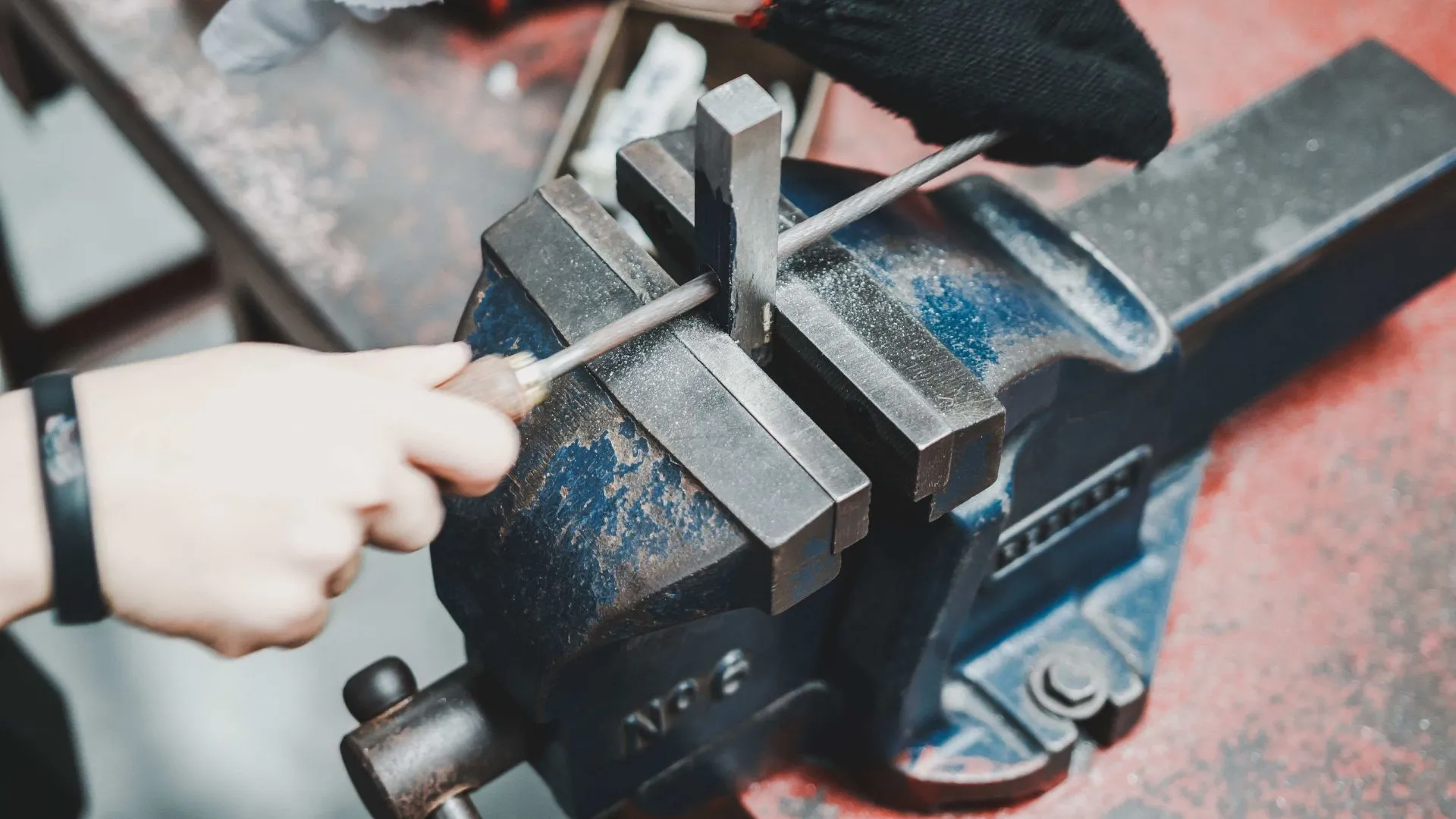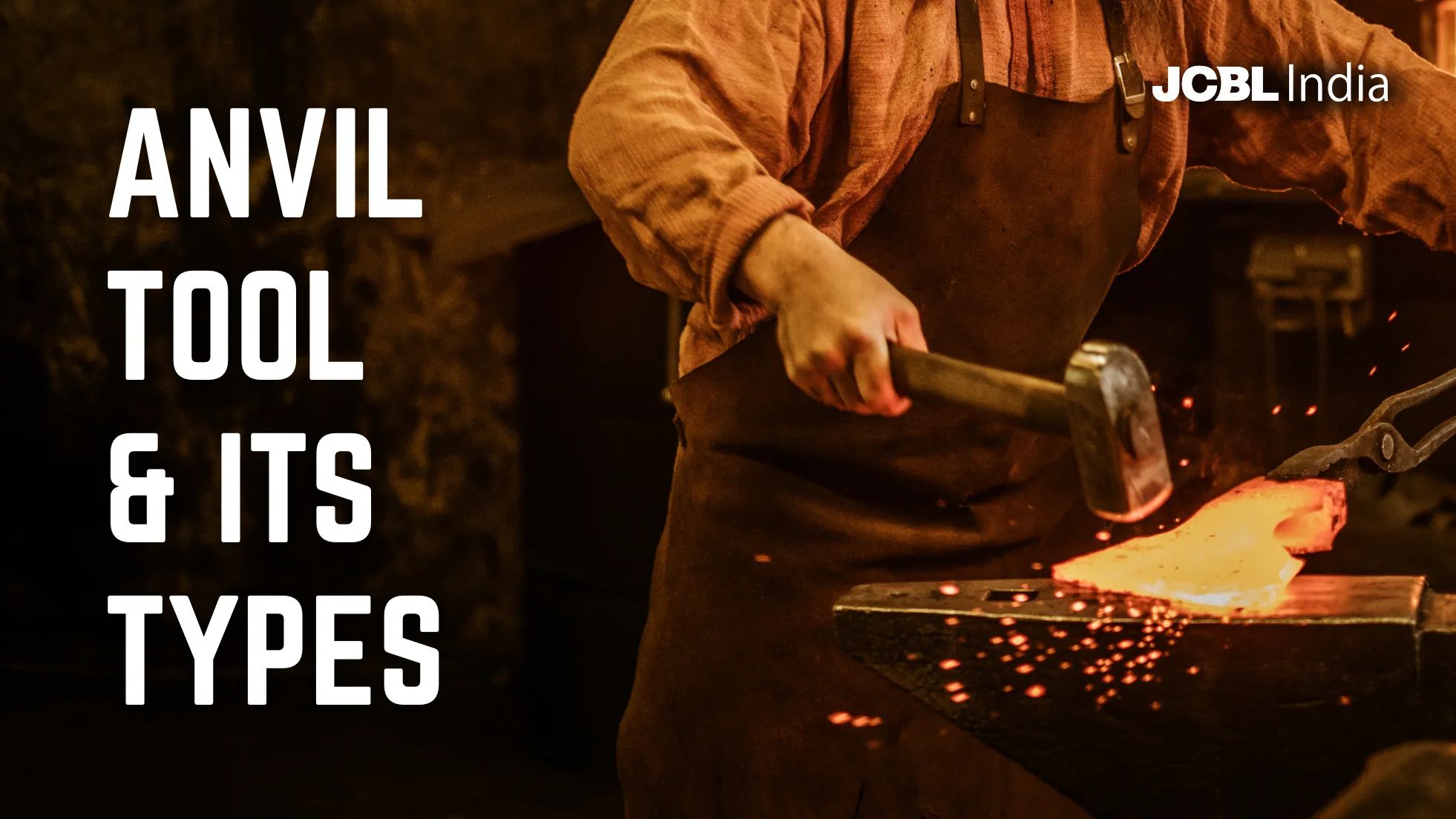Top 5 Applications of Bench Vices in a Workshop

Bench vices are indispensable tools in industries including mechanical, woodworking, and carpentry. It is a versatile tool used by professionals and DIY craftsmen for providing a secure grip and stable platform for performing a task. While bench vices seem simple, they have a diverse array of applications in workshop operations for ensuring precision and efficiency. In this blog, we will discuss the top 5 applications of bench vises in workshops and help you choose the right one for your needs.
What Is A Bench Vice?
A bench vice is a mechanical device that clamps objects firmly in place, allowing you to perform tasks such as cutting, drilling, filing, and assembling with stability and accuracy. Typically mounted on a workbench, the tool consists of two parallel jaws, one fixed and the other movable, that are tightened or loosened using a screw mechanism. Bench vices come in various sizes and types, including woodworker’s vices, engineer’s vices, and multipurpose vices, each catering to specific needs. Made from robust materials like cast iron or steel, bench vices are designed to withstand heavy loads and provide durability, making them an essential addition to any workshop.
To learn more about bench vices, read “The Ultimate Guide to Bench Vice”
Top 5 Applications of Bench Vices in a Workshop
Below is the detailed description of the top 5 applications of bench vices:
Holding Workpieces for Precision Cutting
When it comes to cutting materials such as wood, metal, or plastic, precision is key. Bench vices provide a stable grip on the workpiece, minimizing movement during the cutting process. This stability not only ensures accurate cuts but also enhances safety by reducing the risk of slippage. For example, a carpenter cutting wooden planks can rely on a bench vice to keep the plank steady, allowing for clean and precise cuts. Similarly, metalworkers cutting rods or sheets find the vice indispensable for achieving accurate dimensions.
Secure Clamping for Drilling Operations
Drilling holes into workpieces requires a steady hand and a stable platform. Bench vices excel in this regard by securely holding the material in place, ensuring that the drill bit does not wander or veer off course. This is particularly crucial when working on small or intricate pieces where precision is paramount. For instance, an engineer drilling holes into a metal plate for a machine component can achieve consistent results by using a bench vice. The tool’s firm grip ensures that the workpiece remains stationary, reducing errors and improving overall efficiency.
Support for Filing and Shaping Materials
Filing and shaping tasks require meticulous attention to detail. Bench vices provide the stability needed to hold the workpiece securely, allowing craftsmen to focus on refining the material’s surface or shape. Whether smoothing the edges of a metal sheet or shaping a wooden block, the bench vice acts as an extra pair of hands, keeping the workpiece in place. This not only improves the quality of the finished product but also reduces fatigue, as the craftsman doesn’t need to hold the material manually.
Bending and Shaping Metal Sheets
Metalworking often involves bending and shaping metal sheets to create specific forms or structures. Bench vices are invaluable in this process, providing a robust grip that allows you to apply force without dislodging the material. For example, a mechanic fabricating a custom bracket for a machine can use a bench vice to secure the metal sheet while applying the necessary force to bend it into shape. The vice’s sturdy construction ensures that it can handle the stresses involved, making it a reliable tool for such tasks.
Assembling and Dismantling Components
Assembly and dismantling tasks often involve working with multiple components that need to be held securely in place. Bench vices simplify this process by providing a stable platform to hold parts together or apart during assembly or disassembly. For instance, a bicycle repair technician dismantling a crankset can use a bench vice to hold the component firmly, making it easier to loosen bolts or apply the necessary force. Similarly, assembling intricate parts becomes more manageable when the workpiece is held steady, ensuring precision and reducing the likelihood of errors.
Factors To Consider When Choosing A Bench Vice
Selecting the right bench vice is crucial to maximizing its utility in your workshop. Here are some key factors to consider:
- Material: Opt for vices made from durable materials like cast iron or steel to ensure longevity and the ability to withstand heavy loads.
- Size and Jaw Capacity: Choose a vice with a jaw width and opening capacity that matches the size of the workpieces you’ll be handling.
- Type of Vice: Determine whether you need a woodworker’s vice, engineer’s vice, or multipurpose vice based on your specific requirements.
- Mounting Options: Ensure that the vice can be securely mounted on your workbench and is compatible with your workspace layout.
- Additional Features: Look for features such as swivel bases, quick-release mechanisms, or replaceable jaws for added versatility and convenience.
Conclusion
Bench vices are a cornerstone of any efficient workshop, offering stability, precision, and versatility across a range of tasks. From cutting and drilling to filing and assembling, their applications are vast and indispensable. By understanding the top uses of bench vices and selecting the right one for your needs, you can significantly enhance your productivity and the quality of your work.
JCBL Hand Tools is a trusted manufacturer and supplier that delivers high-quality hand tools, including bench vices. Invest in a high-quality bench vice of JCBL Hand Tools today, and experience the difference it can make in your workshop operations. Whether you’re a seasoned professional or just starting out, our hand tools are an invaluable asset in your craft.
For any queries, contact us at +91-9815579321 or email us at handtools@jcbl.com.
FAQ’s
What is the use of vice in the workshop?
Vices are used to hold objects in place while performing tasks that require precision and accuracy.
What are different types of bench vices?
Bench vices are available in many types, including fixed base, heavy-duty, and carpenter’s vice.


